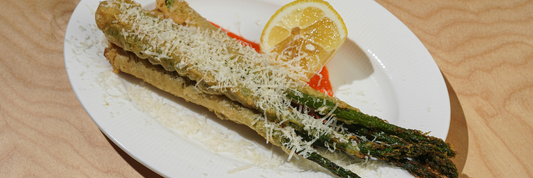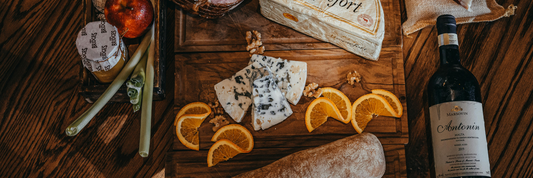For bakeries, cafés, and dessert shops, choosing the right container is more than a packaging decision, it’s about freshness, presentation, and aligning with customer values. Containers don’t just protect products during transport; they influence how customers perceive your brand and whether they return for more.
At Kimecopak, a trusted eco-packaging supplier in Canada and North America, we see bakeries facing one of the most common packaging dilemmas: plastic vs paper containers. PET (polyethylene terephthalate) and paper each have unique strengths and limitations, and both can be viable depending on your product mix and priorities. This guide breaks down the differences so you can make informed choices for your bakery.
- Paper vs Plastic Ice Cream Cups: Which One Wins?
- Paper Cups vs Plastic Cups: Which is the Better Choice?
- PET vs. PP, Which is Better for Iced Coffee
Why Container Material Matters

Dessert containers directly impact:
- Freshness: The wrong choice can leave pastries soggy or cakes dry.
- Presentation: A beautiful dessert deserves packaging that enhances, not hides, its appeal.
- Cost & efficiency: Packaging that reduces waste and spoilage can save money long-term.
- Sustainability: With growing eco-consciousness, customers notice if packaging aligns with their values.
PET vs Paper: the basics
- PET containers are clear, lightweight plastics commonly used for salads, parfaits, and desserts that benefit from visibility. They provide strong barrier protection but are not biodegradable.
- Paper containers: often kraft or coated cardboard are biodegradable, recyclable, and customizable, making them popular for eco-conscious brands. However, they can struggle with moisture-heavy desserts.
According to Accio, 70% of shoppers are willing to pay more for sustainable packaging, making this choice both a practical and branding decision.
Paper cake boxes and bakery bags are on sale on KimEcopak now!
PET Containers: Strengths and Weaknesses
Strengths of PET containers
- Transparency: PET’s clarity showcases layered parfaits, fruit tarts, and cheesecakes beautifully. Customers “eat with their eyes,” and PET lets the product sell itself.
- Durability: Rigid walls protect fragile desserts during stacking and courier delivery.
- Barrier protection: PET prevents moisture loss or absorption, extending shelf life and reducing spoilage.
- Temperature insulation: PET keeps chilled desserts cooler for longer, a bonus for summer deliveries or dairy-based treats.
- Recyclability: PET is widely recyclable in many regions, especially when disposed of properly.
Weaknesses of PET containers
- Not biodegradable: PET can persist in landfills for hundreds of years if not recycled.
- Higher upfront cost: PET can be more expensive than basic paper containers, especially when ordering smaller quantities.
- Environmental concerns: Despite being recyclable, PET is still a form of plastic, which may deter eco-conscious customers.
In short: PET is best when durability, visibility, and shelf life are top priorities. But sustainability perception remains its Achilles’ heel.

Paper Containers: Advantages and Limitations
Advantages of paper containers
- Biodegradability & recyclability: Paper-based packaging decomposes naturally and is widely recyclable.
- Eco-friendly appeal: Kraft paper and compostable dessert boxes resonate strongly with eco-conscious consumers.
- Customization opportunities: Paper surfaces are easy to brand with logos, colors, embossing, or foil stamping. This makes them ideal for bakeries seeking strong brand identity.
- Short-term use: For takeout pastries, cookies, or dry items consumed quickly, paper performs well.
Limitations of paper containers
- Moisture sensitivity: Paper absorbs grease and moisture unless lined, which can weaken the container or stain its surface.
- Durability: Paper is more prone to crushing, especially in courier bags.
- Limited insulation: Paper offers little temperature control for chilled or frozen desserts.
- Production footprint: Paper requires significant water and energy to produce, which complicates its eco profile.
Paper dessert boxes shine in branding and eco-appeal but may fall short for moisture-rich desserts like fruit pies or mousses.
Sustainability Considerations
Choosing between PET and paper isn’t straightforward both have complex environmental impacts.
Paper sustainability profile
- Renewable and biodegradable, but often requires wax or plastic linings for moisture resistance. These linings can complicate recycling.
- Production consumes water, energy, and sometimes forests if not FSC-certified.
PET sustainability profile
- Fully recyclable when disposed of correctly.
- Some PET containers are made with recycled content, reducing their footprint.
- However, improper disposal contributes to plastic waste and pollution.
What this means for bakeries
- Evaluate your local recycling infrastructure: Some cities recycle PET widely, while others have limited facilities.
- Seek certified compostable paper products to ensure true biodegradability.
- Consider hybrid solutions like PET made with recycled content or paper with eco-friendly coatings as middle-ground options.
Performance & Product Suitability

Not all desserts need the same protection. Choosing PET vs paper depends heavily on what you’re packaging.
When PET shines
- Moist or chilled desserts: Fruit tarts, puddings, cheesecakes, mousse cups, and trifles benefit from PET’s barrier protection.
- Items requiring visibility: Clear PET lets customers admire layers or toppings without opening the container.
- Longer shelf life: For refrigerated or display-case desserts, PET reduces spoilage and maintains texture.
When paper is ideal
- Dry pastries and cookies: Scones, biscotti, and shortbread stay fresh without moisture protection.
- Short-term takeout: Customers consuming desserts within a few hours appreciate biodegradable kraft boxes.
- Branding-focused sales: Custom-printed paper boxes elevate presentation and create a boutique feel.
Hybrid options
- Paper containers with plastic linings: Combine eco appeal with moisture protection.
- Compostable coatings: Some paper containers use plant-based linings to improve barrier performance while remaining eco-friendly.
Match material to dessert type and customer expectation. A cheesecake delivered in paper is a disaster waiting to happen; a biscotti in PET feels excessive.
Cost & Business Considerations
Price is always part of the packaging decision, but it’s not just about unit cost.
PET containers
- Often have a lower cost per unit when ordered in bulk.
- Reduce spoilage and returns due to durability.
- May incur environmental levies or customer pushback for using plastic.
Paper containers
- Can be pricier per unit, especially with premium finishes or custom branding.
- May require additional inserts (liners, greaseproof sheets), raising handling costs.
- Offer strong branding and eco positioning, which can offset higher costs through increased customer loyalty.
Total cost of ownership
Consider not just purchase price, but:
- Storage space (PET can take more room)
- Handling time (paper boxes may need assembly)
- Disposal fees or environmental compliance costs
- Branding value and repeat business from eco-conscious buyers
The cheapest option on paper may not be the most cost-effective for your bakery in the long run.
Practical Tips & Final Recommendations
Making the right packaging choice involves balancing product needs, brand goals, and customer expectations.
Key takeaways
- Use PET containers for chilled, moist, or layered desserts requiring visibility and protection.
- Choose paper boxes for dry pastries, cookies, and short-term takeout where branding and eco-friendliness matter most.
- Don’t overlook hybrid solutions that provide the best of both worlds.
Practical tips
- Order samples of both PET and paper containers. Test them during real deliveries or display conditions.
- Gather customer feedback: Do they prefer clear containers or branded kraft boxes?
- Check your local recycling and composting infrastructure, your eco strategy should match what customers can actually do with packaging.
- Consider FSC-certified paper or recycled PET to reduce footprint while maintaining functionality.
Conclusion: Choosing What Works for Your Bakery
There’s no one-size-fits-all answer to the PET vs paper debate. The right dessert container depends on your menu, delivery needs, and brand values. PET provides unmatched clarity and protection for chilled desserts, while paper offers biodegradable appeal and strong branding opportunities. Both materials can work well when chosen with intention.
At Kimecopak, we’re proud to help Canadian and North American bakeries explore eco-friendly dessert packaging solutions that balance performance, presentation, and sustainability. With the right container, your desserts will not only stay fresh but also tell a story of quality and care.
-
LEARN MORE about How "Subscribe for a Happy Life" will benefits your business HERE!
-
LEARN MORE about Kim Vu, sharing on the challenges she faced as a former restaurant owner, and how she overcame them to create KimEcopak HERE!




